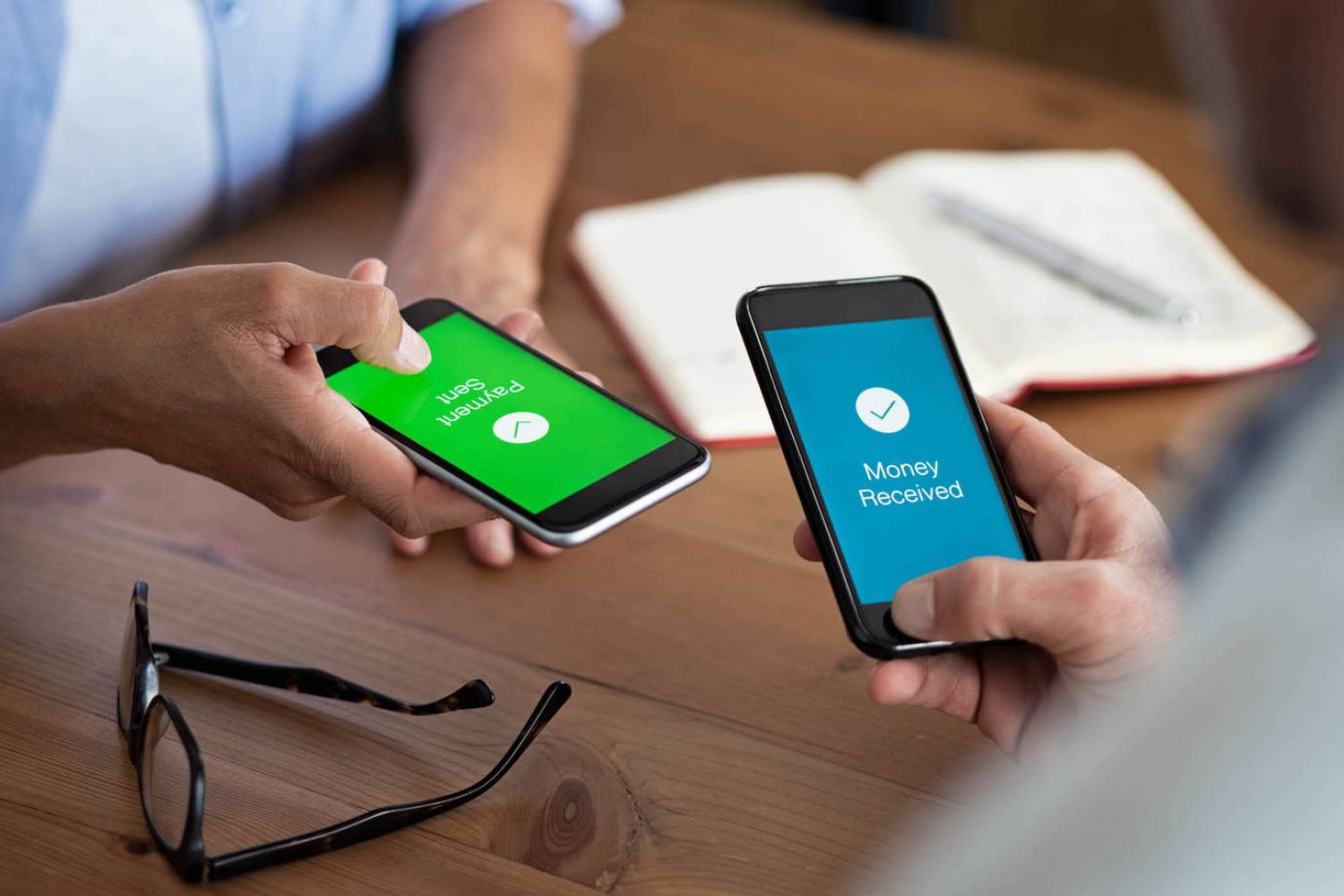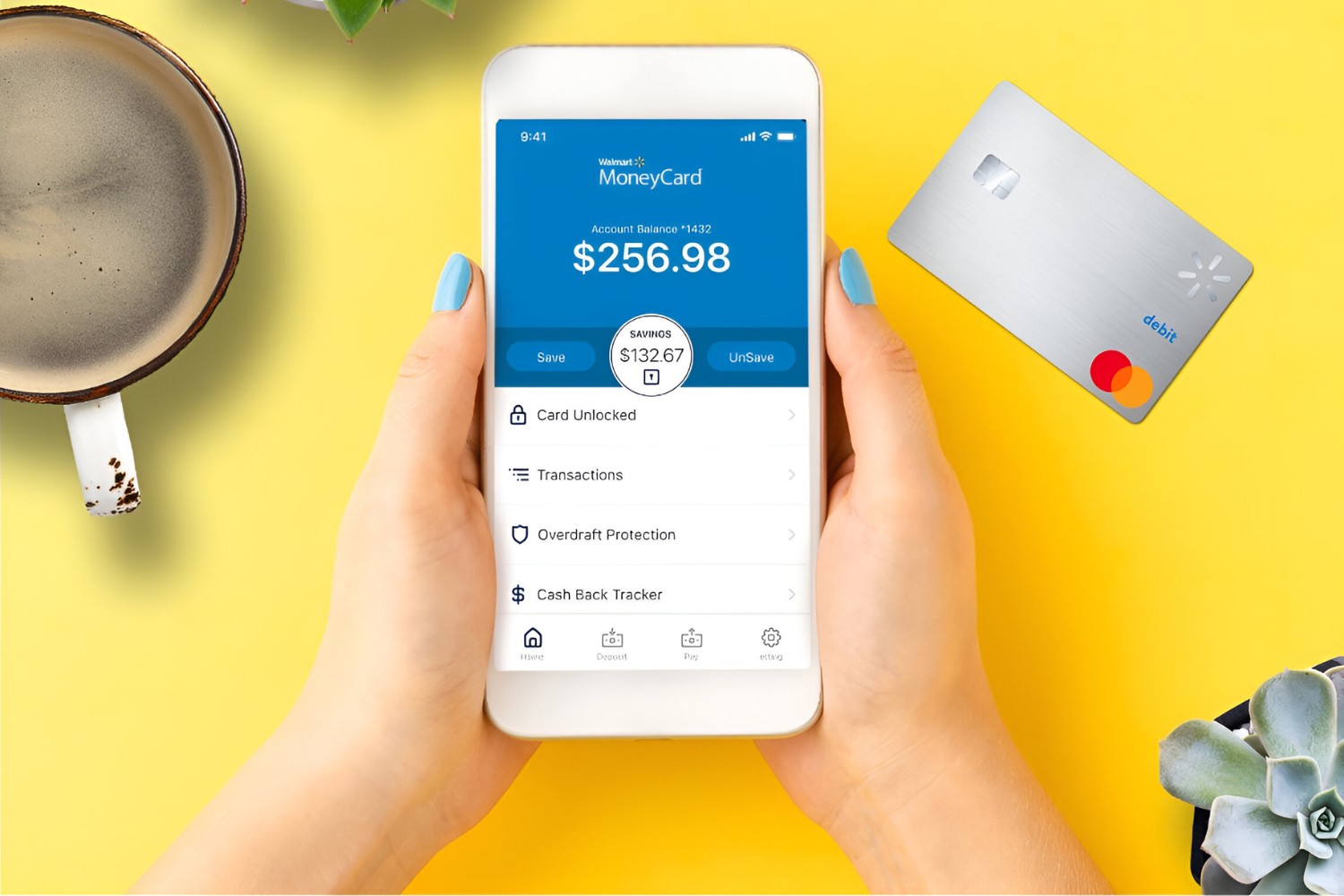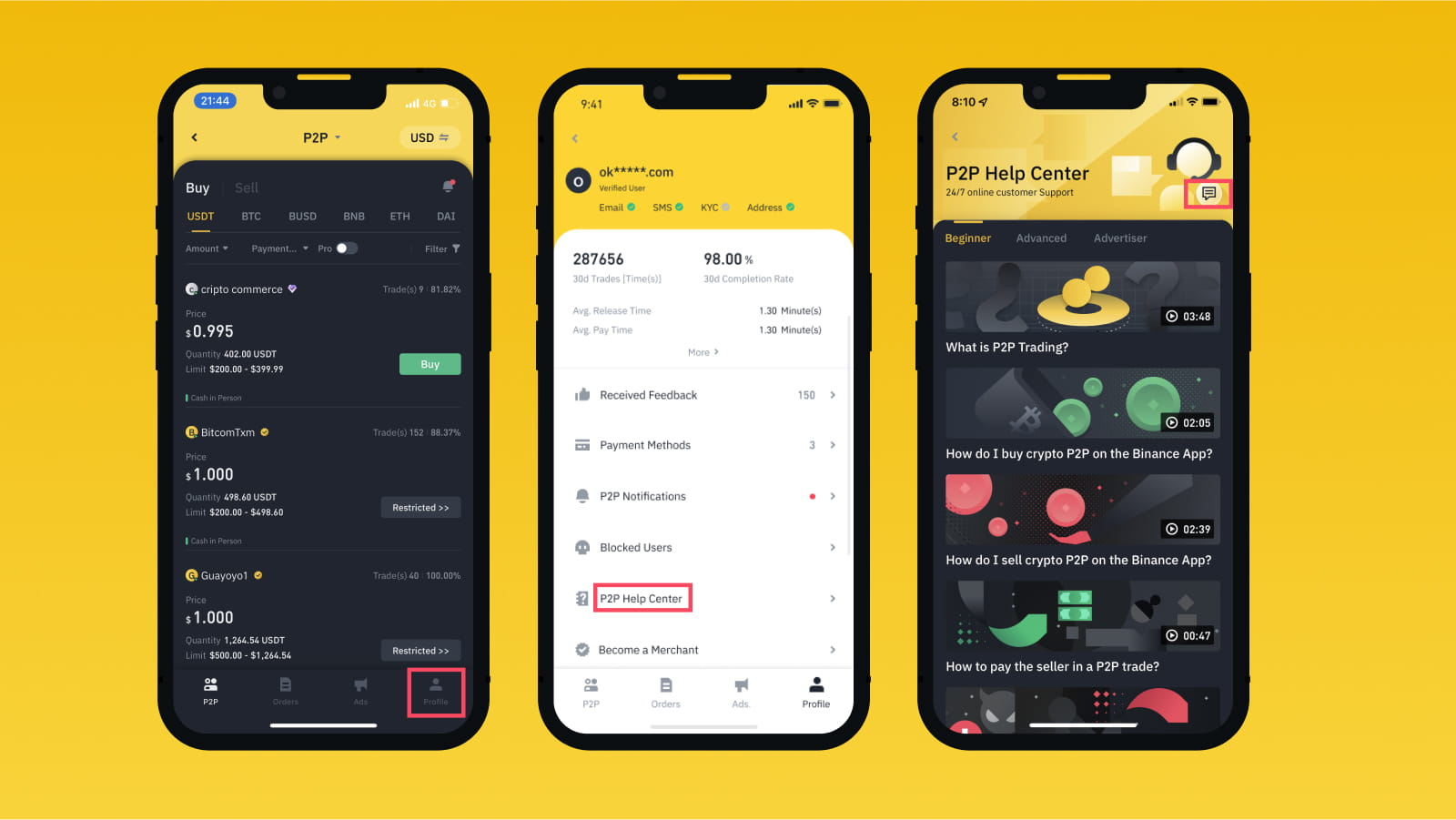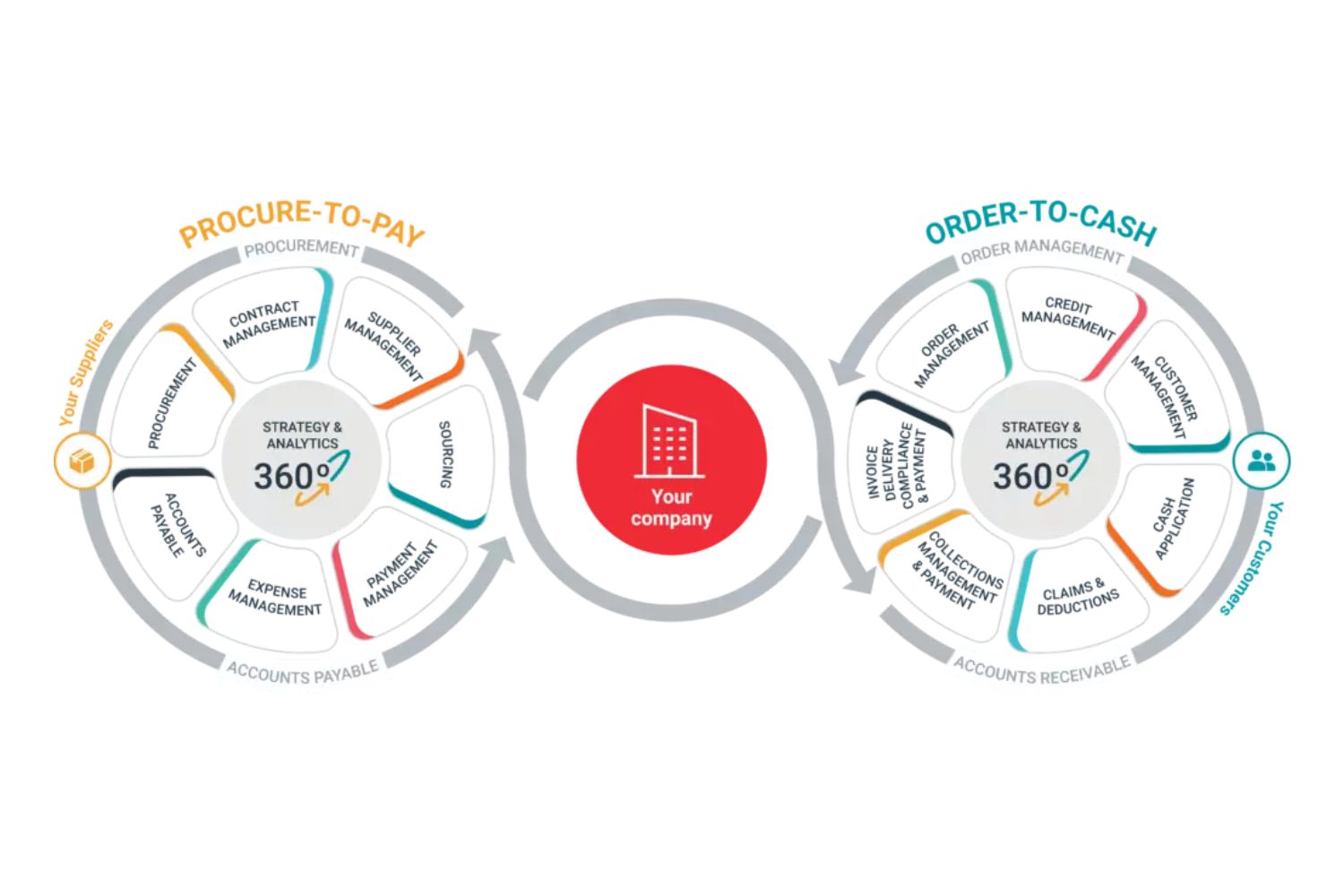Introduction
Welcome to the world of peer-to-peer (P2P) payments, where sending and receiving money has never been easier. In today’s digital age, P2P payments have revolutionized the way people transfer funds, making traditional methods seem outdated and inconvenient. Whether you want to split a bill with a friend, pay your share of rent, or send money to a family member, P2P payments offer a convenient and efficient solution.
P2P payments enable individuals to transfer funds directly to one another using their smartphones or computers. By eliminating the need for cash or physical checks, these digital platforms provide a secure and instant way to send money without the hassle of visiting a bank or searching for an ATM.
There are various P2P payment platforms available, each with its own unique features and advantages. With just a few taps on your phone or clicks on your computer, you can transfer money to anyone, anywhere, at any time. Whether you are a college student splitting expenses with roommates, a small business owner paying contractors, or a parent sending money to your child in need, P2P payments offer a user-friendly and efficient solution to meet your financial needs.
In this article, we will explore the world of P2P payments in detail, discussing how they work, the advantages they offer, the popular platforms available, and the security measures in place to protect your money. We will also explore how to set up P2P payments and the common uses of these platforms. Additionally, we will discuss their limitations and help you navigate through the potential challenges.
So, whether you are new to P2P payments or looking to enhance your understanding of this growing financial trend, sit back, relax, and let us guide you through the exciting world of P2P payments.
Definition of P2P Payments
P2P payments, also known as person-to-person payments, refer to the transfer of funds between two individuals using digital platforms. These payments enable individuals to send money to one another without the need for cash or physical checks. Instead, they utilize online platforms or mobile apps to facilitate the transaction.
P2P payments are based on the concept of electronic funds transfer (EFT), which allows for the seamless transfer of funds between accounts. With P2P payments, individuals can send money to others who have registered on the same platform, typically using the recipient’s email address or mobile phone number as the account identifier.
These payment platforms act as intermediaries, securely storing the user’s bank account information or linking their debit or credit card to facilitate the transfer. This eliminates the need to share sensitive financial information with the recipient directly, enhancing the security of the transaction.
P2P payments have gained popularity due to their simplicity and convenience. They have become an integral part of our digital lives, enabling instant and effortless money transfers. With just a few taps or clicks, individuals can quickly settle debts, split bills, or send funds to friends, family, or even merchants.
It is important to note that P2P payments are not limited to monetary transfers between individuals. Many platforms also offer additional features, such as the ability to request money, donate to charitable causes, or make payments to businesses or service providers.
Overall, P2P payments have revolutionized the way we exchange money, making outdated methods such as cash or checks seem cumbersome and time-consuming. By embracing digital platforms, we can now transfer funds quickly, securely, and conveniently, opening up new possibilities for financial interactions in our increasingly connected world.
How P2P Payments Work
P2P payments operate through specialized platforms or mobile apps that facilitate the transfer of funds between individuals. The process typically involves several steps, ensuring a seamless and secure transaction.
Here is a simplified breakdown of how P2P payments work:
- Registration: To get started, users need to create an account on a P2P payment platform or app. This usually involves providing personal information, such as your name, email address, and phone number. Some platforms may also require you to link a bank account or debit/credit card to facilitate transactions.
- Connection: Once registered, users can connect with their contacts using their email addresses or mobile numbers. This allows you to easily find and send money to people you know.
- Initiating the Payment: To initiate a P2P payment, simply enter the amount you wish to send and select the recipient from your contacts. Some platforms may also allow you to include a memo or note along with the payment.
- Funding the Payment: The next step is to fund the payment. Depending on the platform, you can choose to link your bank account, debit card, or credit card to transfer funds. Some platforms may also provide the option to use funds already stored in your P2P payment account.
- Confirmation: After funding the payment, the platform will generate a confirmation message or email with details of the transaction. This provides both the sender and recipient with a record of the payment for future reference.
- Delivery of Funds: The recipient will receive a notification of the payment through the platform or app. They can then accept the payment and choose how to receive the funds. Options may include transferring the funds to a linked bank account, keeping them in the P2P payment account, or using the funds for future transactions.
- Completion: Once the recipient accepts the payment, the transaction is typically considered complete. The funds will be transferred to the recipient’s designated account, and both parties will receive confirmation of the successful transfer.
P2P payment platforms provide a user-friendly interface, making the process quick and easy. They have built-in security measures to protect users’ financial information, utilizing encryption technology and a variety of authentication methods to ensure the safety of each transaction.
It’s important to note that different P2P payment platforms may have variations in their processes and features. Some platforms may charge fees for certain types of transactions or offer additional services, such as instant transfers or international payments.
Overall, P2P payments simplify the process of transferring funds between individuals, offering a convenient and efficient way to send and receive money instantly.
Advantages of P2P Payments
P2P payments bring numerous advantages to individuals seeking a convenient and efficient way to transfer funds. Here are some of the key benefits of using P2P payment platforms:
- Convenience: P2P payments offer unmatched convenience, allowing users to send and receive money instantly using their smartphones or computers. No need to carry cash or write checks, as everything can be done digitally with just a few taps or clicks.
- Speed: Traditional payment methods such as cash or checks can be time-consuming, requiring physical interaction or processing time. P2P payments, on the other hand, are near-instantaneous. Funds can be transferred and accessed immediately, providing a fast and efficient way to settle debts or make payments.
- Accessibility: P2P payment platforms are widely accessible, with most offering apps that can be downloaded and used on smartphones or accessed through web browsers. This means that users can send or receive money anytime and anywhere, as long as they have an internet connection.
- Simplicity: P2P payment platforms are designed to be user-friendly and intuitive. The process of sending money typically involves a few straightforward steps, making it easy for individuals of all technological backgrounds to navigate and use these platforms.
- Splitting Expenses: P2P payments are especially convenient for splitting bills or expenses with friends, family, or roommates. With just a few taps, you can quickly divide the cost and send individual payments, eliminating the need to track down cash or calculate who owes what.
- Security: P2P payment platforms prioritize the security of financial transactions. They employ encryption technology, multi-factor authentication, and fraud detection measures to protect users’ sensitive information. This provides peace of mind when it comes to the safety of your funds and personal details.
- Record Keeping: P2P payment platforms maintain a record of all transactions, providing users with a convenient and easily accessible history of their payments. This can be especially useful for tracking expenses, managing finances, or when needing to reference past transactions.
- Flexibility: P2P payments offer flexibility in terms of funding sources. Users can link their bank accounts or debit/credit cards to make payments, providing various options to choose from depending on their preferences or needs.
- Growth in Acceptance: P2P payment platforms are becoming increasingly accepted by businesses, allowing users to make payments to merchants or service providers. This eliminates the need for cash or physical cards, streamlining the payment process for goods and services.
With their convenience, speed, and enhanced security, P2P payments have transformed the way individuals exchange money, offering unparalleled advantages over traditional payment methods.
Popular P2P Payment Platforms
The rise of P2P payments has led to the emergence of several popular platforms that facilitate secure and convenient money transfers. Let’s take a closer look at some of the most widely used P2P payment platforms:
- PayPal: PayPal is one of the pioneering P2P payment platforms, offering a trusted and widely accepted way to send and receive money. With PayPal, users can link their bank accounts or credit/debit cards to make transactions. It allows for seamless transfers to friends, family, and even businesses, both domestically and internationally.
- Venmo: Venmo, now owned by PayPal, has gained immense popularity, particularly among younger users. It offers a social media-like experience, allowing users to connect with friends, comment on transactions, and even add emojis. Venmo makes it easy to split bills, pay for services, and request money from others.
- Zelle: Zelle is a P2P payment platform embedded in many banking apps, making it convenient for users with existing bank accounts. It enables instant money transfers between participating banks, eliminating the need for third-party apps or additional registration.
- Google Pay: Google Pay provides a simple and secure way to send money using your Google account. This platform allows users to send money via email, phone number, or by simply entering the recipient’s name. Google Pay is widely accepted and offers additional features like in-store payments and loyalty card integration.
- Apple Pay: Apple Pay is a popular P2P payment platform exclusive to Apple users. With Apple Pay, individuals can send and receive money via iMessage or ask Siri to make a payment. It is integrated with Apple’s ecosystem, allowing for seamless and secure payments using Apple devices.
- Cash App: Developed by Square, Cash App provides a user-friendly P2P payment experience. It allows for quick transfers between users with linked bank accounts or debit cards. Cash App also offers additional features such as a Cash Card, which functions as a traditional debit card linked to the Cash App balance.
- Facebook Pay: Facebook Pay makes sending and receiving money easy for users of Facebook, Instagram, WhatsApp, and Messenger. It combines convenience with a familiar interface, allowing individuals to make secure payments to friends or businesses directly within the platform.
These are just a few examples of the popular P2P payment platforms available today. It’s worth noting that each platform may have its own unique features, transaction limits, and availability in different regions. It’s important to consider these factors when choosing the right P2P payment platform for your needs.
As the popularity of P2P payments continues to grow, more platforms are likely to enter the market, offering users additional choices and innovative features to enhance their payment experience.
Security of P2P Payments
Ensuring the security of P2P payments is a crucial aspect of any reputable P2P payment platform. These platforms implement various measures to protect users’ financial information and transactions. Here are some of the security features commonly found in P2P payment platforms:
- Encryption: P2P payment platforms use encryption technology to safeguard users’ information. This ensures that sensitive data, such as bank account details or credit card information, is transmitted securely and remains protected from potential threats.
- Secure Authentication: P2P payment platforms employ multiple layers of authentication to verify users’ identities. This may involve using passwords, PINs, biometric data (such as fingerprints or facial recognition), or two-factor authentication (2FA). These measures help ensure that only authorized individuals have access to the account.
- Fraud Detection: P2P payment platforms employ advanced fraud detection systems to monitor suspicious activities and prevent fraudulent transactions. These systems use algorithms and machine learning to identify and flag potentially unauthorized or fraudulent transactions, providing an extra layer of security.
- Transaction Notifications: P2P payment platforms send real-time transaction notifications to users whenever a payment is made or received. This allows users to stay informed and alert in case of any unexpected or unauthorized transactions.
- Dispute Resolution: In the event of a disputed transaction or unauthorized activity, P2P payment platforms typically offer a resolution process. Users can report the issue and provide relevant details, allowing the platform’s support team to investigate and resolve the dispute.
- Privacy Controls: P2P payment platforms offer privacy controls that enable users to manage their personal information and adjust their account’s visibility. Users can choose to limit the visibility of their transactions or restrict who can send them payments, enhancing privacy and reducing the risk of unwanted interactions.
- Regulatory Compliance: P2P payment platforms adhere to industry regulations and compliance standards to ensure the security and integrity of their services. They often collaborate with financial institutions and are subject to strict regulatory oversight to maintain the highest level of security and data protection.
While P2P payment platforms strive to provide robust security measures, users also have a role to play in protecting their own accounts. It is essential to follow best practices, such as using strong and unique passwords, regularly updating account information, and being cautious of phishing attempts or suspicious links.
Furthermore, it’s important to download P2P payment apps or access the platforms through official and trusted sources to minimize the risk of downloading malicious software or falling victim to scams.
By staying vigilant and taking necessary precautions, users can enjoy the convenience and benefits of P2P payments while ensuring the security of their financial transactions.
How to Set Up P2P Payments
Setting up P2P payments is a simple and straightforward process. While specific steps may vary depending on the platform you choose, here is a general guide on how to set up P2P payments:
- Select a Platform: Begin by researching and selecting a P2P payment platform that suits your needs. Consider factors such as availability in your region, accepted payment methods, user interface, and security features.
- Create an Account: Download the app or visit the website of your chosen P2P payment platform. Follow the registration process, providing the necessary information such as your name, email address, and mobile phone number. Some platforms may require additional verification steps, such as linking a bank account or providing identification documents.
- Link a Funding Source: To fund your P2P payments, you will need to link a bank account, debit card, or credit card to your account. This allows you to transfer funds from your chosen funding source to make payments to others.
- Verify Your Identity: Some P2P payment platforms have identity verification processes to ensure the security of transactions and comply with regulatory requirements. This may involve providing additional information or furnishing supporting documents.
- Add Contacts: Connect with your contacts or friends on the platform. Most P2P payment platforms allow you to find and add contacts using their email addresses, mobile phone numbers, or usernames.
- Initiate a Payment: Once your account is set up, you can start sending and receiving payments. To send money, enter the recipient’s information (such as their email or phone number), indicate the payment amount, and select the funding source.
- Confirm and Complete: Review the transaction details to ensure accuracy, including the recipient’s information and the payment amount. Once you confirm the details, proceed with the payment. The platform will provide a confirmation notification or email, indicating the completion of the transaction.
- Receive Payments: When someone sends you a payment, you will receive a notification or email informing you of the incoming funds. Access your account and follow the instructions to accept and receive the payment. Depending on the platform, you may have options to transfer the funds to your linked bank account, keep them in your P2P payment account, or use them for future transactions.
- Manage Account Settings: Take some time to explore and customize your account settings. Adjust privacy controls, update contact information, enable security features like two-factor authentication if available, and review transaction history.
Remember to familiarize yourself with the specific functionalities and features of your chosen P2P payment platform. Each platform will have its own unique user interface and additional options, such as requesting money, splitting bills, or making payments to businesses or merchants.
Setting up P2P payments not only offers a convenient way to transfer money but also opens up a seamless and efficient method of financial transactions with friends, family, and even businesses.
Common Uses of P2P Payments
P2P payments have become an integral part of our financial landscape, offering a wide range of uses for individuals and businesses alike. Here are some of the common scenarios where P2P payments are widely utilized:
- Splitting Bills: P2P payments are frequently used to split bills among friends, roommates, or colleagues. Whether it is splitting the cost of a dinner, rent, utilities, or travel expenses, P2P payments provide a convenient way to divide expenses and settle debts quickly and easily.
- Paying Back Borrowed Money: P2P payments offer a seamless solution for repaying borrowed money. Friends or family members who lend money can receive the repayment directly through a P2P payment platform, eliminating the need for physical cash transactions or cumbersome manual transfers.
- Gifts and Celebrations: P2P payments simplify the process of giving and receiving gifts for birthdays, holidays, or other special occasions. Instead of physical gifts or checks, individuals can send monetary gifts through P2P payment platforms, allowing the recipient to use the funds as they wish.
- Small Business Transactions: P2P payments are increasingly adopted by small business owners and freelancers for a variety of purposes. These platforms offer a convenient way for businesses to receive payments from clients and customers, making transactions more efficient and reducing the reliance on cash or checks.
- Purchasing Goods and Services: Many P2P payment platforms now provide options to make payments to businesses or service providers. Individuals can use these platforms to pay for online purchases, settle bills at restaurants or stores, or even make donations to charitable organizations.
- Reimbursements: P2P payments are commonly used for reimbursing friends, colleagues, or employees for shared expenses or business-related costs. By using P2P payment platforms, the reimbursement process becomes faster and more transparent, with a documented record of the transaction.
- Emergency Funds: P2P payments can also come in handy during emergencies. If someone urgently needs financial assistance, friends or family members can quickly send them money through a P2P payment platform, providing immediate help and support.
- Charitable Donations: P2P payment platforms often include options to make charitable donations directly through the app or website. This makes donating to worthy causes more accessible and convenient, allowing individuals to contribute to their favorite charities with just a few clicks.
These are just a few examples of the common uses of P2P payments. The versatility and convenience of P2P payment platforms make them suitable for various personal, social, and business-related transactions.
As P2P payments continue to evolve, individuals and businesses are finding new and innovative ways to leverage this technology for secure and convenient financial transactions.
Limitations of P2P Payments
While P2P payments offer numerous advantages, it is important to be aware of their limitations. Understanding these limitations can help users make informed decisions and take necessary precautions. Here are some of the key limitations of P2P payments:
- Limited Acceptance: Although P2P payment platforms are growing in popularity, not all individuals and businesses accept P2P payments. It is essential to ensure that the recipient has a registered account on the same platform or accepts payments from the platform you are using.
- Transaction Fees: Some P2P payment platforms may charge transaction fees for certain types of transfers or expedited payments. It is important to review the fee structure of the platform to understand any potential costs associated with using the service.
- Transaction Limits: P2P payment platforms may have limitations on the maximum amount that can be transferred or received within a specific timeframe. Users should be aware of these limits to ensure their transactions align with the platform’s restrictions.
- Account Holds: In certain circumstances, P2P payment platforms may place holds on transactions for security reasons. This could cause delays in accessing your funds, especially if additional verification or documentation is required.
- Dependency on Technology: P2P payments rely on internet connectivity and the availability of mobile devices or computers. If there are network issues or technological limitations, it may hinder the ability to send or receive payments in a timely manner.
- Privacy Concerns: While P2P payment platforms strive to protect user privacy, it is important to be mindful of the information shared during transactions. Users should review privacy settings, be cautious when sharing personal details, and ensure that their transactions are conducted securely.
- Security Risks: Despite the security measures implemented by P2P payment platforms, there is always a risk of fraudulent activity or unauthorized transactions. Users must remain vigilant, protect their account information, and report any suspicious activities to the platform’s support team.
- Limited Recourse: In the case of a disputed transaction or unauthorized activity, resolving issues with P2P payments can be more challenging compared to traditional banking methods. Users may need to rely on the platform’s dispute resolution process, which can take time and require providing relevant evidence.
While these limitations are important to consider, it is worth noting that P2P payments have made significant progress in addressing these concerns. P2P payment platforms continue to improve security measures, expand their networks, and enhance user experiences to mitigate these limitations and offer more seamless and secure transactions.
Being aware of these limitations and utilizing P2P payment platforms responsibly can help users navigate the digital payment landscape effectively.
Conclusion
P2P payments have revolutionized the way individuals transfer money, offering a convenient, fast, and secure method to send and receive funds. With just a few taps on a smartphone or clicks on a computer, P2P payment platforms allow users to split bills, repay friends, make purchases, and engage in a wide range of financial transactions.
We explored the definition and workings of P2P payments, highlighting their advantages and the popular platforms available. P2P payments offer unmatched convenience, speed, and accessibility, making them suitable for various scenarios such as splitting bills, paying back borrowed money, and gifting. They have also gained traction among small businesses looking for efficient payment options and individuals wanting to make charitable donations.
While P2P payments offer numerous benefits, it is important to be aware of their limitations, such as limited acceptance, transaction fees, and security risks. Understanding these limitations allows users to make informed decisions and utilize P2P payment platforms responsibly.
Overall, P2P payments continue to evolve, providing individuals and businesses with more efficient, secure, and convenient ways to manage their financial transactions. By embracing this technology and taking necessary precautions, users can enjoy the benefits of P2P payments while ensuring their privacy and financial security.
So, whether you are looking to settle a dinner bill with friends, pay back borrowed money, or make a charitable donation, P2P payments offer a user-friendly and efficient solution in today’s digital age. Embrace the convenience, embrace the efficiency, and embrace the future of digital financial transactions with P2P payments.

























